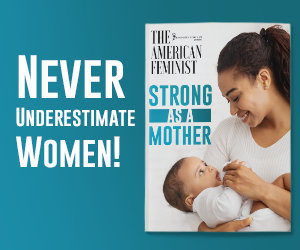A federal judge just gave a big failing grade to the argument that abortion is a U.S. Constitutional right.
Judge Amul Thapar, a justice on the Sixth Circuit Court of Appeals, published an opinion Friday arguing that the so-called “right to abortion” and the cases that it is based on, Roe v. Wade and Planned Parenthood v. Casey, are “wrong as a matter of constitutional text, structure, and history,” National Review reports.
Thapar wrote his opinion as a dissent to the Sixth Circuit’s decision to strike down two Tennessee pro-life laws. One law would prohibit abortions on unborn babies once their heartbeat is detectable, about six weeks of pregnancy, and the other would prohibit discriminatory abortions based on the unborn baby’s sex, race or a diagnosis of Down syndrome.
Thapar said there is no right to abortion, even under Roe v. Wade, and there is no historical case for this supposed “right” either.
“Under any test for evaluating the historical pedigree of an alleged right, the right to an abortion does not just miss the mark. It flunks out,” the judge wrote.
In Roe, even the U.S. Supreme Court did not recognize the existence of a right to abortion in the Constitution, Thapar wrote.
LifeNews depends on the support of readers like you to combat the pro-abortion media. Please donate now.
He said legal scholars who support legalized abortion have pointed out the flawed logic of Roe, too. The late Supreme Court Justice Ruth Bader Ginsburg, a heroine of abortion activists, was one of them.
Thapar said there is no historical background to support a right to abortion either.
According to National Review:
A right can be discerned when it is “deeply rooted” in our “history, legal traditions, and practices,” but “this is a tough test to pass. And rightly so. After all, when the judiciary recognizes a new right, we take the decision away from the American people. The Roe majority claimed that a right to abortion easily clears that high hurdle. But in doing so, it rewrote history.”
The judge explained that most U.S. states and territories had laws that protected unborn babies by banning or strictly limiting abortions before 1973, and the Supreme Court justices who decided Roe “did not provide a single example of a state that legally guaranteed an affirmative right to abortion at either the time of the Founding or during the Reconstruction Era. That silence is not just deafening. It should end the debate.”
He urged the Supreme Court to right its wrongs and recognize that there is no right to abortion.
“… the historical evidence is clear,” Thapar wrote. “The Constitution leaves decisions like this to the states. The state legislatures can do what we can’t: listen to the community, create fact-specific rules with appropriate exceptions, gather more evidence, and update their laws if things don’t work properly. And if the public is unhappy, it can fight back at the ballot box. The courts should return this choice to the American people—where it belongs.”
The Supreme Court soon will have the chance to do just that. In October, the justices are scheduled to hear a major abortion case out of Mississippi that challenges the precedents set by Roe and Casey. At issue in the case is the question of whether states may prohibit abortions before an unborn baby is viable. Current precedent prohibits states from doing so.
Meanwhile, several recent polls show strong public support for pro-life laws that protect unborn babies from abortion at least after the first trimester or once their heartbeat is detectable.








